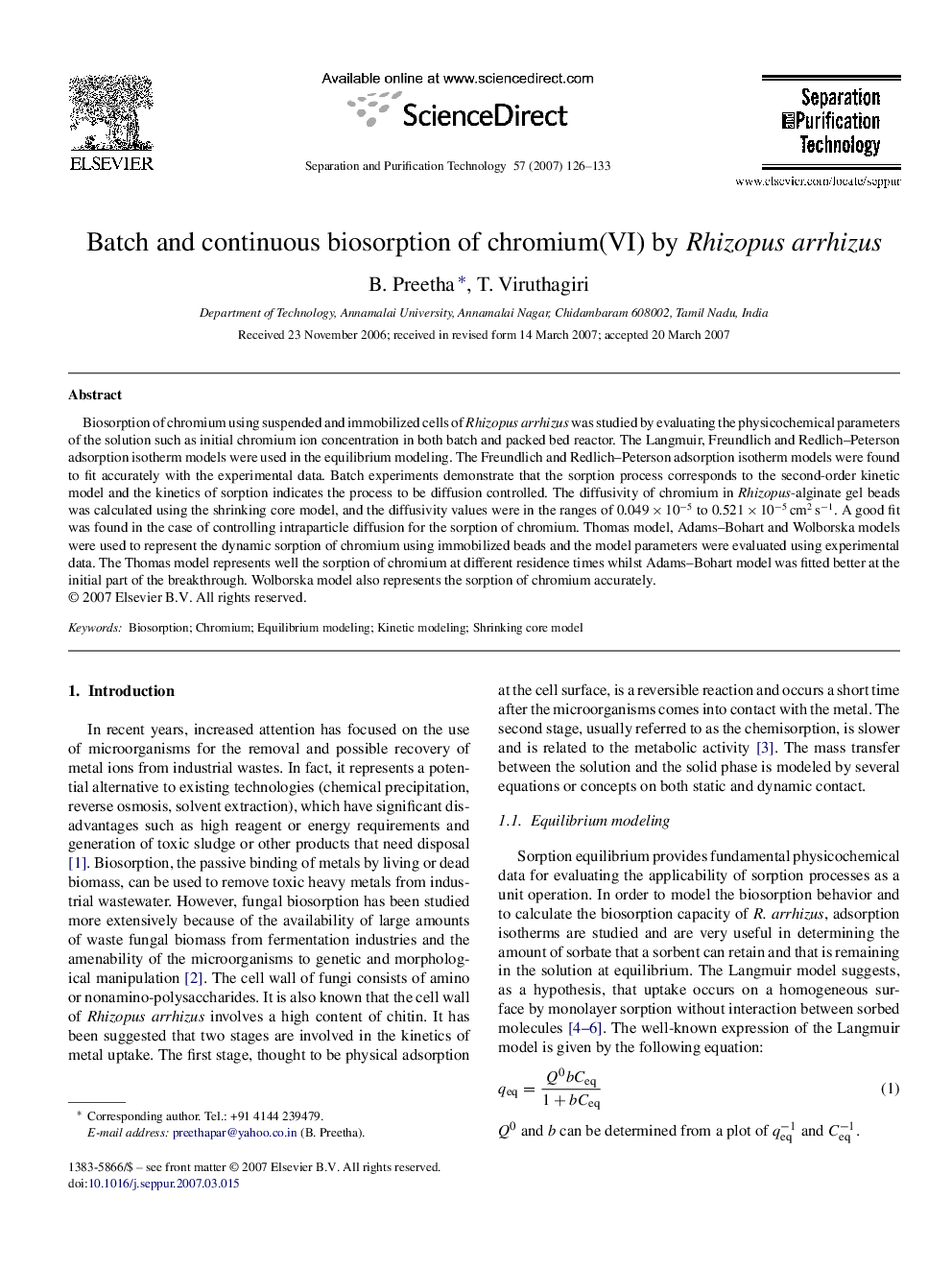| Article ID | Journal | Published Year | Pages | File Type |
|---|---|---|---|---|
| 643911 | Separation and Purification Technology | 2007 | 8 Pages |
Biosorption of chromium using suspended and immobilized cells of Rhizopus arrhizus was studied by evaluating the physicochemical parameters of the solution such as initial chromium ion concentration in both batch and packed bed reactor. The Langmuir, Freundlich and Redlich–Peterson adsorption isotherm models were used in the equilibrium modeling. The Freundlich and Redlich–Peterson adsorption isotherm models were found to fit accurately with the experimental data. Batch experiments demonstrate that the sorption process corresponds to the second-order kinetic model and the kinetics of sorption indicates the process to be diffusion controlled. The diffusivity of chromium in Rhizopus-alginate gel beads was calculated using the shrinking core model, and the diffusivity values were in the ranges of 0.049 × 10−5 to 0.521 × 10−5 cm2 s−1. A good fit was found in the case of controlling intraparticle diffusion for the sorption of chromium. Thomas model, Adams–Bohart and Wolborska models were used to represent the dynamic sorption of chromium using immobilized beads and the model parameters were evaluated using experimental data. The Thomas model represents well the sorption of chromium at different residence times whilst Adams–Bohart model was fitted better at the initial part of the breakthrough. Wolborska model also represents the sorption of chromium accurately.
